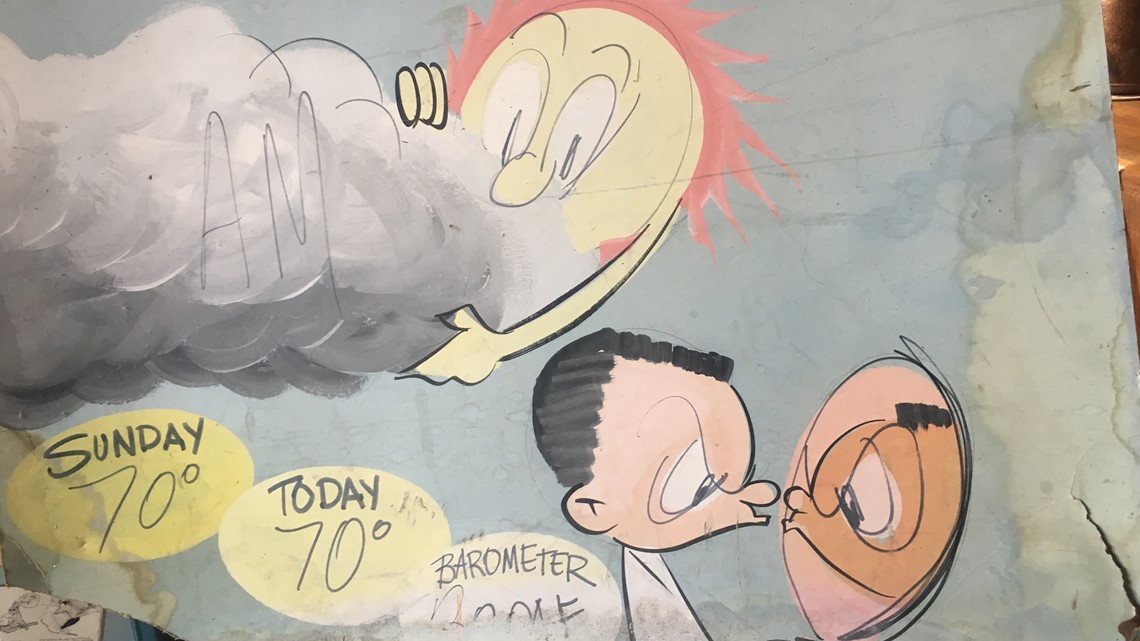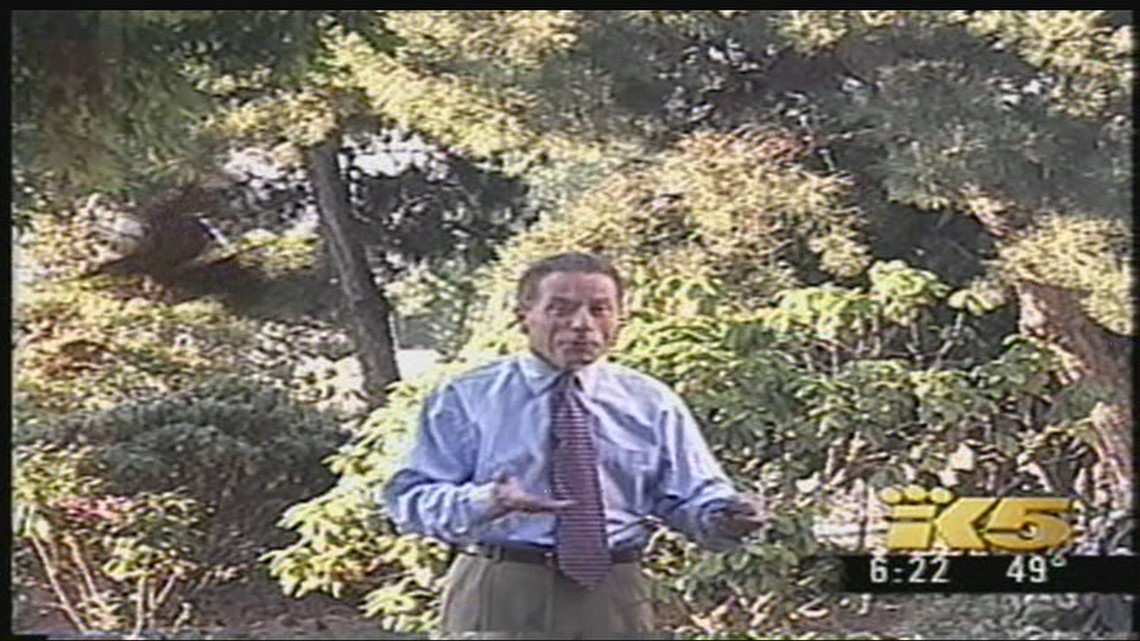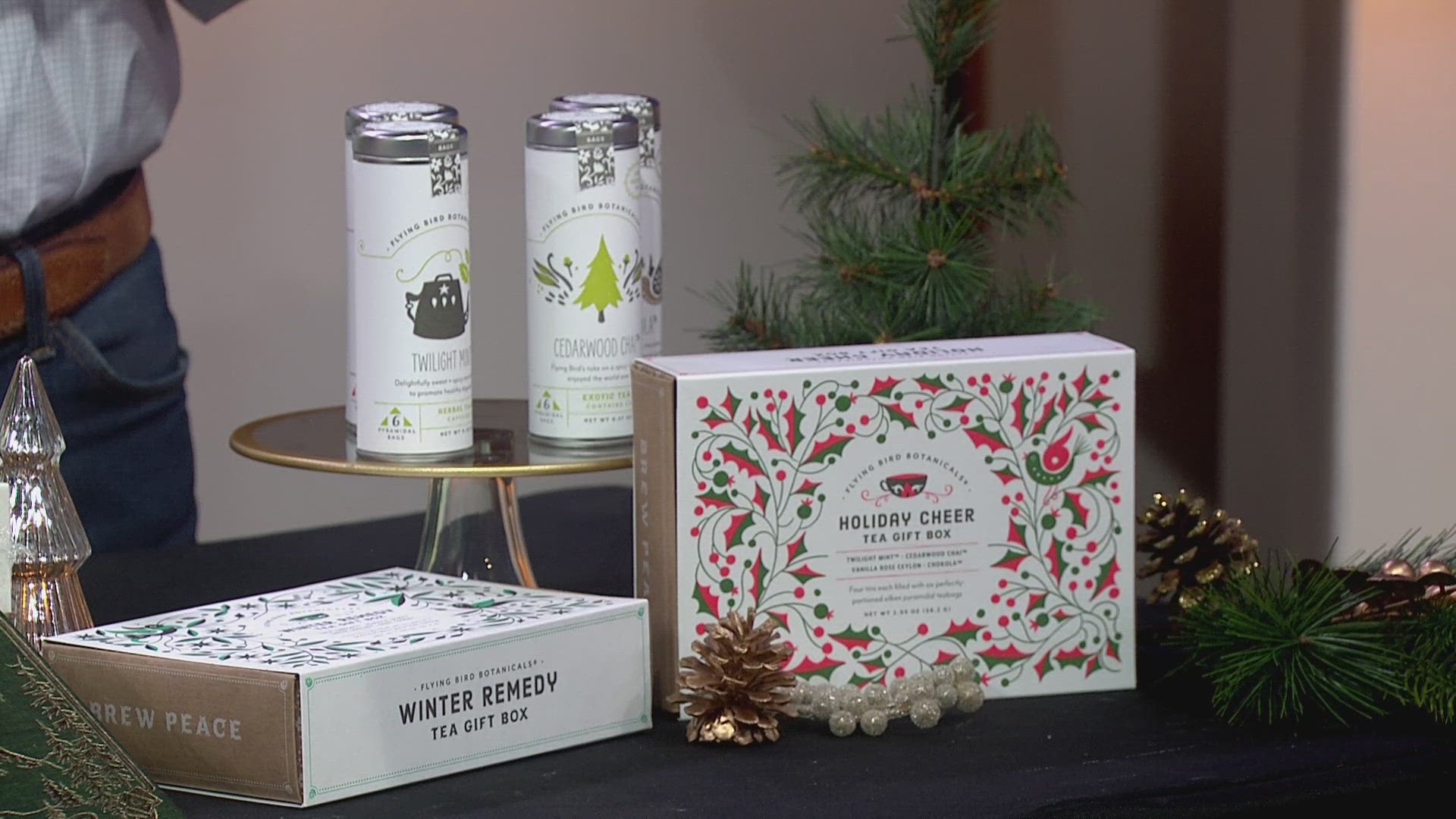When early broadcasters were looking for things to interest people, weather seemed like a natural – after all everyone talks about it the weather, especially in the Pacific Northwest.
But in the early 1950's there wasn't a lot of weather information to be had so how do you make it interesting? You hire Bob Hale, a local sign painter known for his great cartoon characters. Hale blazed the weather cartooning trail for a decade accompanied by Ole Sol and Sammy Seagull, to name a few.
RELATED: KING 5 celebrates 70th anniversary
Bob Cram continued the cartooning tradition through the 60's and into the early 70's, and successfully brought another entire group of characters on the scene.
Robin Hall, Cram's daughter, still remembers that crew including Onshore Flo, always bringing clouds in, Tondaleo Schmidlap, a cranky landlady who wore a housecoat and curlers in her hair and always had a cigarette in her mouth and complained about the weather, and Big Hi, who usually brought the gift of the sun.


Cram was asked to study up on weather but he decided to move on, sticking to things he loved, like skiing and cartooning. In fact, the inside of the old lodge at Crystal Mountain was covered with his skiing cartoons.
About this time the weather forecasters had a changing look, sometimes looking like they had just left the disco floor.
The graphics gradually improved during the 1980's and early 1990's, as did the underlying weather technology, but we were still forecasting from paper maps and serenaded by the sound of dot matrix printers.
Meteorologists still had trouble seeing the details of Washington's complex microclimates, but that all changed in 1994 when KING 5 installed the first operational Doppler radar in Puget Sound at Sea-Tac.
The same year we introduced the SchoolNet automated weather stations located at schools – in neighborhoods where people live, not out at the few airports around the region. That network has now grown to more than 150 stations around the state.
This innovation continues today. KING 5 helps fund ongoing research into Northwest weather at the University of Washington and is the only local station to integrate the high-resolution computer model output into its on-air graphics
But broadcasting the weather isn't all science even today; being out in the weather is one of our favorite things to do.
That tradition started early with Hale, who did weather live from the Seattle World's Fair in 1962. One of our viewers, Tim Quigley form Bremerton, was at the World's Fair with his high school girlfriend and watched Hale draw the weather. Afterward, Hale tore off the drawing and handed it to them. They carried the huge poster board around the rest of the day at the fair and Quigley stored it in his garage for over 50 years.
This spring Quigley cleaned out his garage and asked us if we would like the drawing, and he was kind enough to drop it off.
It turns out it may be the only surviving piece of Hale's on-air artwork. Sadly, the same is true of Cram's on-air weather work. His daughter has only two of his weather cartoons.


One of our favorite place to be out in the weather used to be our rooftop weather garden at the old station with its classic birdhouse built by Captain Phil Harris of Deadliest Catch fame.


Of course, going outside was never without risk – even in the roof garden especially when we were attacked by nesting crows who didn't like us around their babies, or maybe they just didn't like our forecasts.





